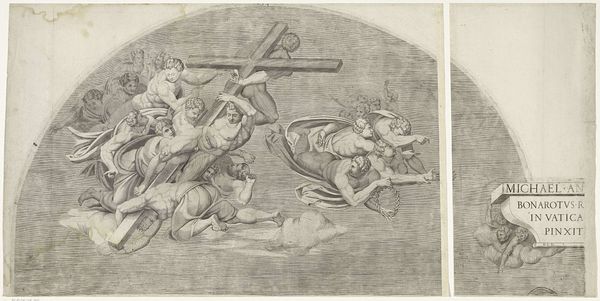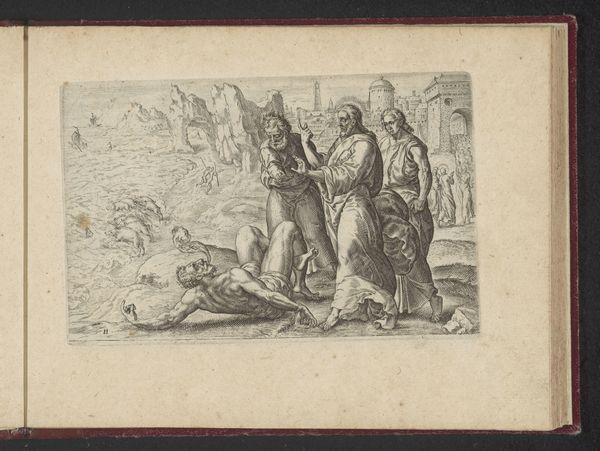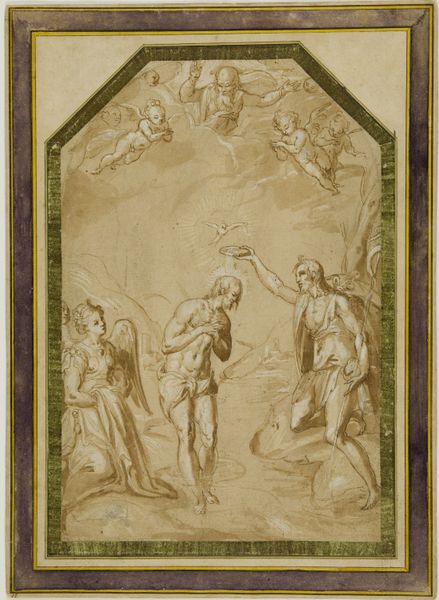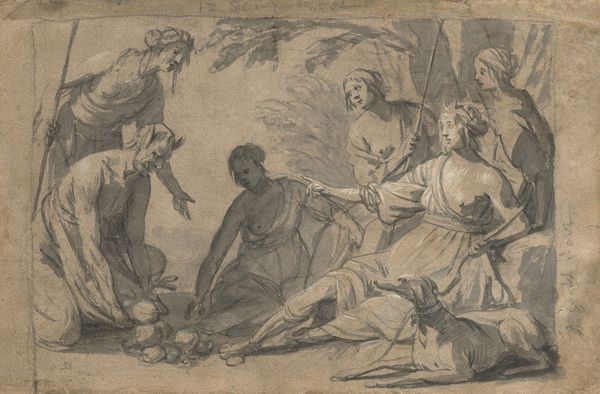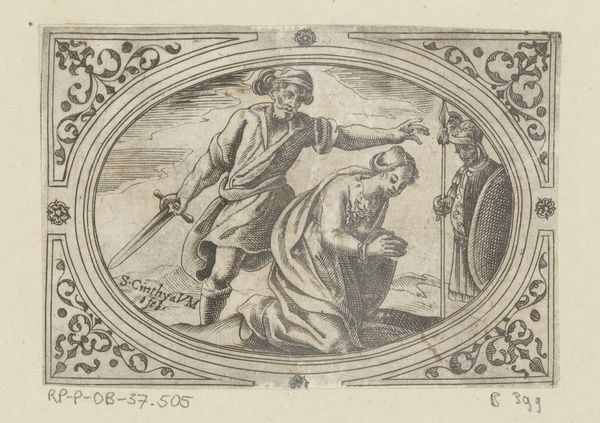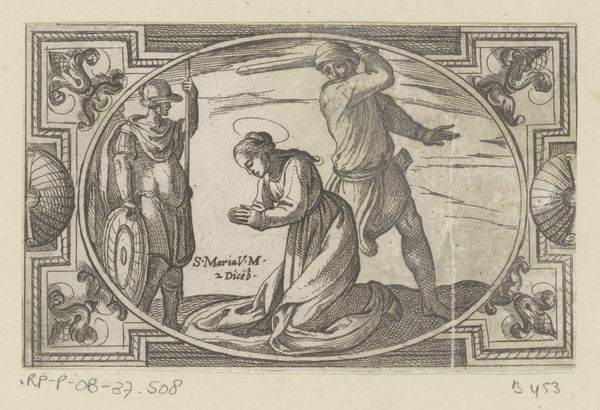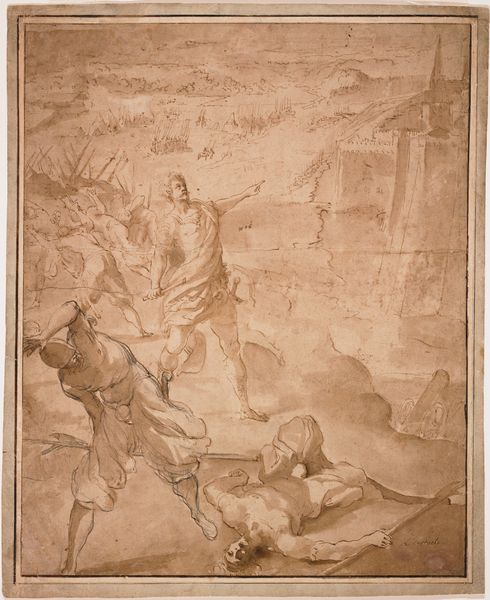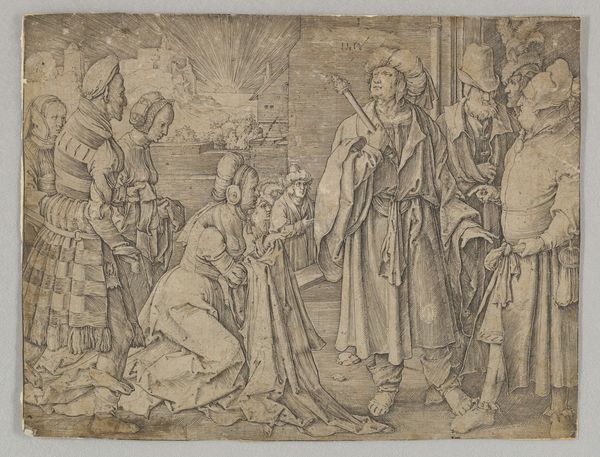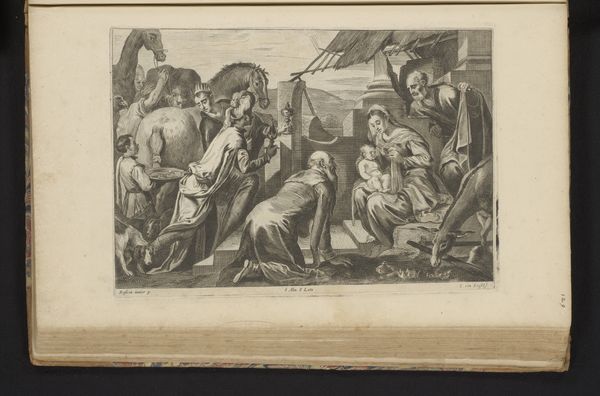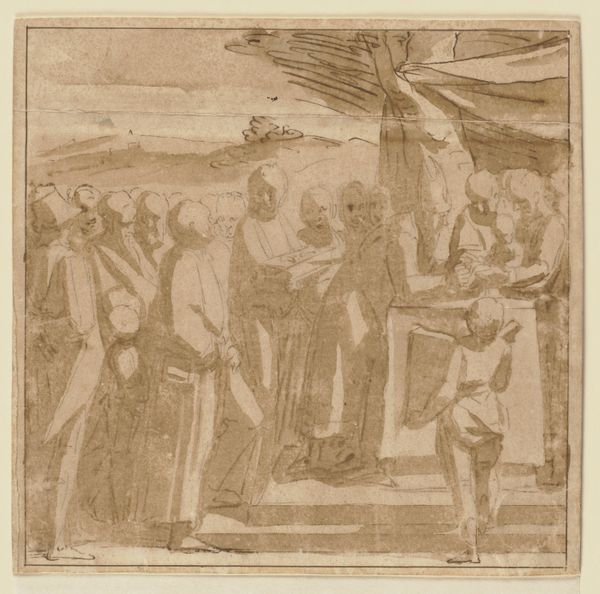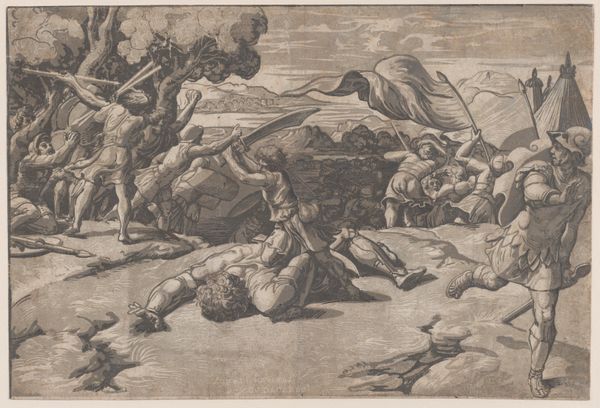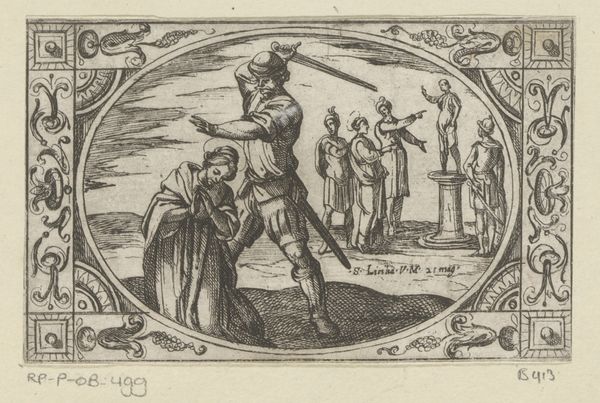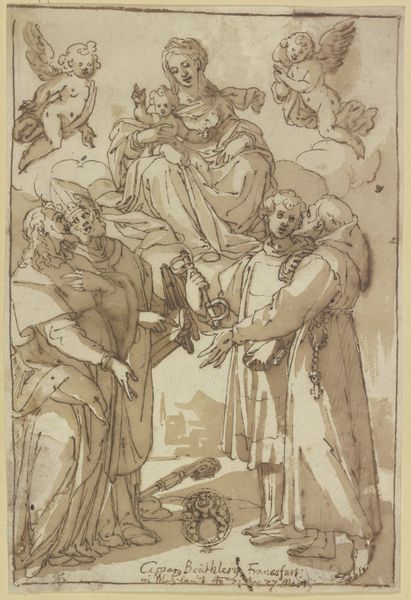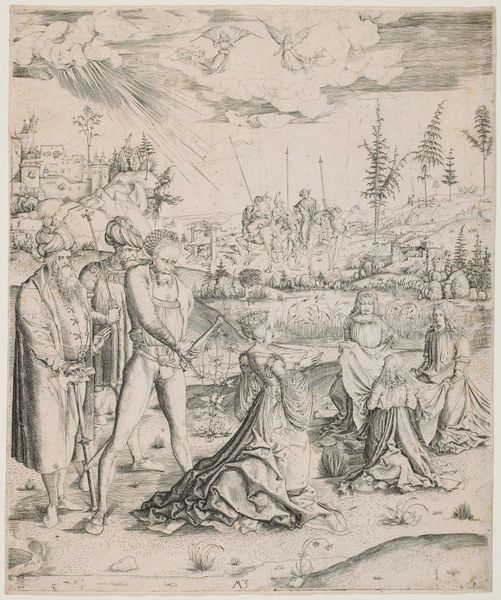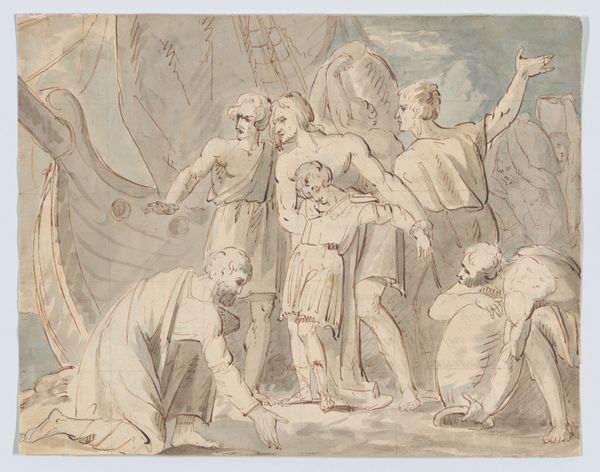
tempera, painting
#
gouache
#
narrative-art
#
tempera
#
painting
#
figuration
#
history-painting
#
italian-renaissance
#
watercolor
Copyright: Public domain
Curator: Here we have a painting attributed to Francesco Botticini entitled "Way to Calvary", crafted using tempera and gouache. What’s your first reaction? Editor: A solemn procession. Despite the idyllic, almost fairytale landscape in the background, the central figure’s suffering is palpable. There's an undercurrent of inevitability, punctuated by figures who seem either sorrowful or deliberately cruel. Curator: It is a compelling depiction, made even more interesting when you consider the rise of confraternities who would commission this sort of art in the Renaissance period. Images such as these served as aids to prayer, prompting introspection. How does this resonate with you, given the painting's symbolism? Editor: The crosses looming in the distance undeniably serve as stark reminders of what is to come, adding depth to the present moment that the central figure experiences. The guard clad in metal could represent the Roman soldiers, and generally those figures, or institutions that were actively contributing to the Christ’s crucifixion. Curator: And the presence of the three women standing at the other side adds to the gravity of the situation. The Virgin Mary and Mary Magdalene often appear together at pivotal points. Botticini successfully depicts human sorrow through his sensitive treatment of these holy figures. Editor: Yes, those are common figures associated with grief in similar religious narrative painting. And, looking closely, one might even see Botticini's subtle brushstrokes, especially in the rendering of the garments; these fine details create a tactile experience for the viewer. The emotional weight is carried not only by the image itself, but also by the materials from which it is made. Curator: Indeed, the materiality of tempera and gouache—often chosen for their vibrant colours and delicate handling—lends a distinct atmosphere that influences the narrative's perception, creating both physical presence and emotional weight. It definitely makes us think about the conditions that informed its creation. Editor: Looking at "Way to Calvary" again, I notice how Botticini weaves potent symbols and tangible feelings in a beautiful and sensitive rendition that resonates emotionally even today. Curator: Ultimately, “Way to Calvary” encourages us to think about the relationship between socio-historical context and the creation and appreciation of visual symbolism.
Comments
No comments
Be the first to comment and join the conversation on the ultimate creative platform.
